Stability prioritized over risk-taking assets: Korean investors
Investors should rethink how strategies in the era of high interest will differ from the past, they say
By Oct 25, 2023 (Gmt+09:00)
LG Chem to sell water filter business to Glenwood PE for $692 million


Kyobo Life poised to buy Japan’s SBI Group-owned savings bank


KT&G eyes overseas M&A after rejecting activist fund's offer


StockX in merger talks with Naver’s online reseller Kream


Mirae Asset to be named Korea Post’s core real estate fund operator


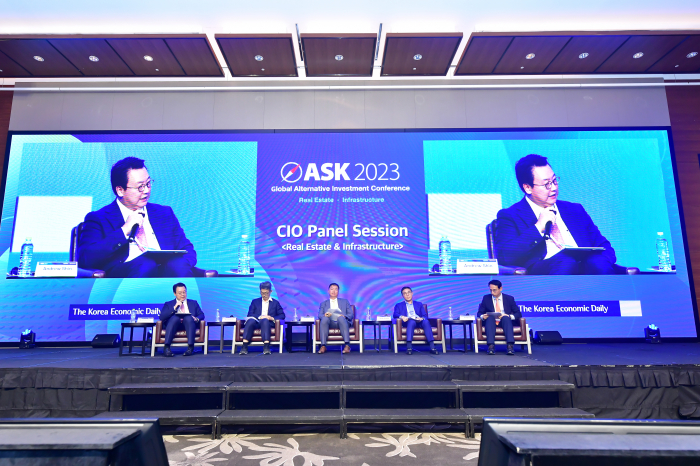
South Korean institutional investors increased private lending as interest rates stay higher for longer, while tapping into the secondary market for faster exits. They also reinforced acquisition finance to provide downside protection and chose stable income generation in lieu of risk-taking investments.
At an ASK 2023 panelist session on Wednesday, alternative investment heads from four institutions — the National Federation of Fisheries Cooperatives (NFCC), called Suhyup in Korean, Hyundai Marine & Fire Insurance Co., Lina Life Insurance Co. and Construction Guarantee Cooperatives (CG) — shared their real asset strategies and economic outlook for next year.
The discussion was moderated by Andrew Shin, head of Willis Towers Watson Korea.
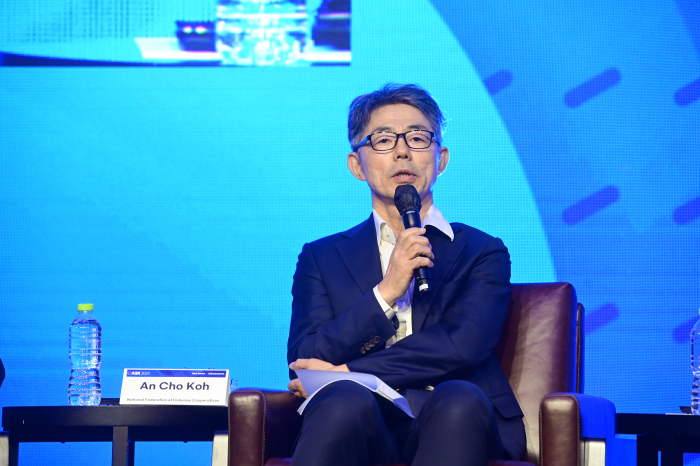
NATIONAL FEDERATION OF FISHERIES COOPERATIVES
NFFC prioritized acquisition finance this year. It focused on overseas deals as some global assets, backed by the world's leading investment banks, post returns 200 to 300 basis points higher than domestic assets, CIO Koh An-cho said.
It also expanded secondary investments this year to boost liquidity at a faster pace, while cutting capital injection in real estate hit hard by rate hikes, Koh added.
The federation manages 14 trillion won in assets. Alternative investments reach 4.2 trillion won, of which real estate and infrastructure assets amount to 1.4 trillion won and 700 billion won, respectively.
The NFCC will maintain its current ratio of alternative investments regardless of market conditions, while adjusting exposure to each of three segments: private equity, venture capital and private debt; acquisition finance; and real assets, the CIO said.
"There are peaks and troughs in an economic cycle, which is typically a decade. In the era of low interest rates, many investors underestimated the cycle and poured capital into commercial real estate, which suffers today. Investors should be more prudent in selecting certain assets which are defensive to macroeconomic factors," he explained.
The federation will maintain its alternative investment proportion, while increasing exposure to social infrastructure and data centers next year, the CIO noted.
For its global real estate investments next year, NFCC will choose blind-pooled funds that guarantee dividend distribution and stable cash flow, he said.
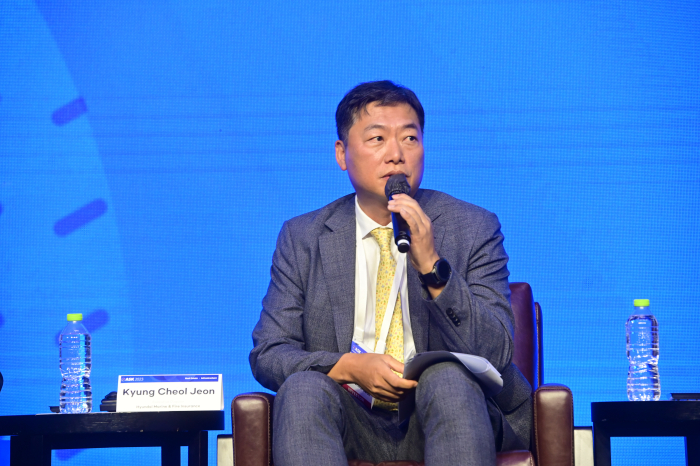
HYUNDAI MARINE & FIRE INSURANCE
This year has been very challenging for global investors amid geopolitical conflicts and longer-than-expected high interest rates, Hyundai Marine’s Executive Director Jeon Kyung-cheol said.
The insurance company this year focused on senior secured loan investments as the safest tranche's interest rate rose to a level similar to mezzanine debt, Jeon said.
Hyundai Marine’s AUM is 40 trillion won as of end-2022. Real assets amount to 12 trillion won, including 3.6 trillion won each for real estate and infrastructure.
Jeon said alternative investment strategies in the era of high interest rates should differ from the past.
"We shouldn't blindly believe that certain sectors bring great returns in the long term. Many investors didn't expect the US office market crash. We must take a more selective approach to assets, with thorough research and due diligence," he added.
While many Korean limited partners often teamed up to invest in a certain tranche dedicated to Koreans, that trend won’t last long, he said.
“Korean investors increasingly believe they are better protected when investing with global institutions in a tranche. Koreans have found that some terms and conditions are too unfavorable to them, especially when setting up a refinancing plan with global investors who hold senior secured loans," Jeon explained.
He predicted that investors will find more opportunities in global infrastructure assets with medium-to-high risk and returns next year.
The insurer will seek senior secured loans in domestic prime offices, as well as global blind-pooled funds for secondaries and leveraged loans, he noted.
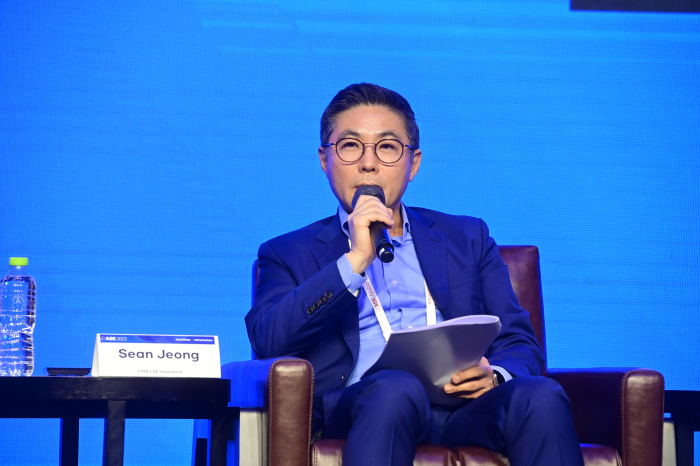
LINA LIFE INSURANCE
Lina Life Insurance boosted its direct lending this year, with a particular focus on "seed assets" that borrowers can generate stable income from, CIO Sean Jeong said.
Private debt has become attractive in the era of high interest rates; some three-year yields on private loans have increased to the low 10% range, he added.
Lina Life manages 5 trillion won in assets, including 1.25 trillion won in alternative investments. Real estate and infrastructure account for 30% of the alternative assets.
The insurer believes that real assets mitigate the volatility of its investment returns, Jeong said.
"The return on real assets offset losses in private equity and debt in the second half of 2022, driving profits on our entire alternative investment portfolio," he explained.
"We also invested in closed-end funds for income-driven real assets and in open-end funds for liquidity. This strategy also helped our well-balanced portfolio," he noted.
The insurer seeks portfolio diversification and concentration on promising sectors at the same time. It sees growth potential in the multifamily and industrial sectors, while keeping an eye on value-added and secondary strategies for high returns, Jeong said.
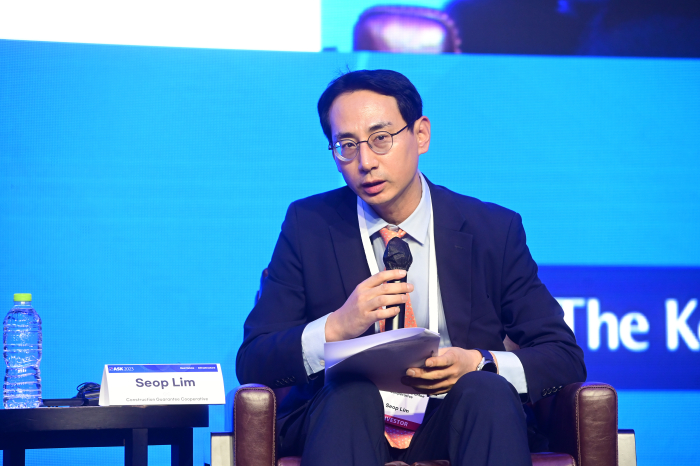
CONSTRUCTION GUARANTEE COOPERATIVES
Alternative assets offered higher risk-adjusted returns than traditional assets in the past, but investors should consider whether this is still valid in the era of high interest rates, said Construction Guarantee Cooperatives CIO Lim Seop.
Real assets will become more important when interest rates stabilize, he added.
The construction workers' institution manages 4 trillion won in assets, including 600 billion won in alternative investments. Real estate and infrastructure account for 60% and 20% of alternative assets, respectively.
It took a conservative approach to real estate this year and picked safe assets like properties in the Seoul metropolitan region, Lim said.
Construction Guarantee also expanded acquisition finance for downside protection, he added.
It will strengthen diversification by region and industry rather than adjusting exposure to certain themes, the CIO noted.
Construction Guarantee sees promise in renewables and digital infrastructure, but it will first thoroughly research the sectors' supply and demand, he said. The oversupply of logistics centers in some markets is a reminder that demand is critical to investment success, he added.
Write to Jihyun Kim at snowy@hankyung.com
Jennifer Nicholson-Breen edited this article.
-
 ASK 2023KIC eyes private debt, infrastructure in era of high interest rates
ASK 2023KIC eyes private debt, infrastructure in era of high interest ratesOct 25, 2023 (Gmt+09:00)
1 Min read -

-
 ASK 2023Alternative investment forum ASK 2023 to begin Oct. 25 in Seoul
ASK 2023Alternative investment forum ASK 2023 to begin Oct. 25 in SeoulOct 23, 2023 (Gmt+09:00)
2 Min read -
 ASK 2023Funding gap creates opportunities in private real estate debt: ASK 2023
ASK 2023Funding gap creates opportunities in private real estate debt: ASK 2023May 19, 2023 (Gmt+09:00)
5 Min read


